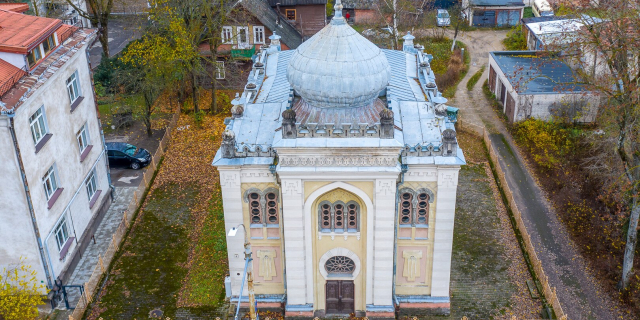The Wolf's Lair (German: Wolfsschanze; Polish: Wilczy Szaniec) served as Adolf Hitler's first Eastern Front military headquarters in World War II.
The headquarters was located in the Masurian woods, near the village of Görlitz in Ostpreußen (now Gierłoż), about 8 kilometres (5 miles) east of the small East Prussian town of Rastenburg (now Kętrzyn), in present-day Poland. The central complex and the Führer's bunker were surrounded by three security zones guarded by two Schutzstaffel (SS) units: the SS-Begleitkommando des Führers, and the Reichssicherheitsdienst. The Wehrmacht's armoured Führerbegleitbrigade was held in readiness nearby but, as a part of the Heer's elite Großdeutschland Division, was used to counter-attack Red Army break-throughs in Army Group Centre's front and rescue cut-off Heer, Luftwaffe Fallschirmjag...Read more
The Wolf's Lair (German: Wolfsschanze; Polish: Wilczy Szaniec) served as Adolf Hitler's first Eastern Front military headquarters in World War II.
The headquarters was located in the Masurian woods, near the village of Görlitz in Ostpreußen (now Gierłoż), about 8 kilometres (5 miles) east of the small East Prussian town of Rastenburg (now Kętrzyn), in present-day Poland. The central complex and the Führer's bunker were surrounded by three security zones guarded by two Schutzstaffel (SS) units: the SS-Begleitkommando des Führers, and the Reichssicherheitsdienst. The Wehrmacht's armoured Führerbegleitbrigade was held in readiness nearby but, as a part of the Heer's elite Großdeutschland Division, was used to counter-attack Red Army break-throughs in Army Group Centre's front and rescue cut-off Heer, Luftwaffe Fallschirmjager and SS panzer troops.
The 20 July Plot, an assassination attempt against Hitler, took place at the Wolf's Lair on 20 July 1944.
As part of the preparations for the coming Operation Barbarossa, the decision was made in late 1940 to build a military headquarters for the Führer in Eastern Europe, similar in concept to the Felsennest in Western Europe. Like the Felsennest, the new headquarters had to be as close to the front as possible, but far enough to be safe from enemy forces.
Eventually, a top-secret site was chosen in the middle of the Masurian woods, in what was then East Prussia, far from roads and urban areas, and accessible only by a single railway and small airstrip. To maintain secrecy, locals were told that the construction works were for a new cement factory. The Organisation Todt completed construction of the entire 6.5 km2 (2+1⁄2 sq mi) complex by 21 June 1941.
Hitler first arrived at the headquarters on 24 June 1941, two days after Barbarossa commenced. At its peak, over 2,000 people lived and worked at the Wolf's Lair, including food-tasters to sample Hitler's food before he ate it to guard him against being poisoned.[1] Additional construction work began in mid-1944 to enlarge and reinforce many of the original buildings on the site on Hitler's orders, although the work was never completed because of the Red Army's rapid advance during the Baltic Offensive.
Hitler left the Wolf's Lair for the final time in November 1944 after having spent over 800 days there, the longest he had stayed at any place over the course of the war, during a 3+1⁄2-year period.[citation needed]


































Add new comment